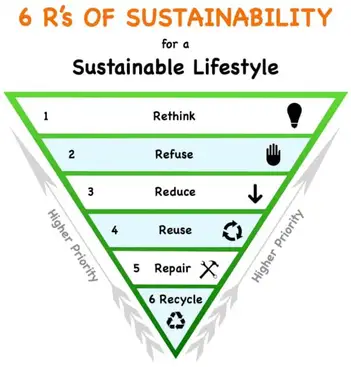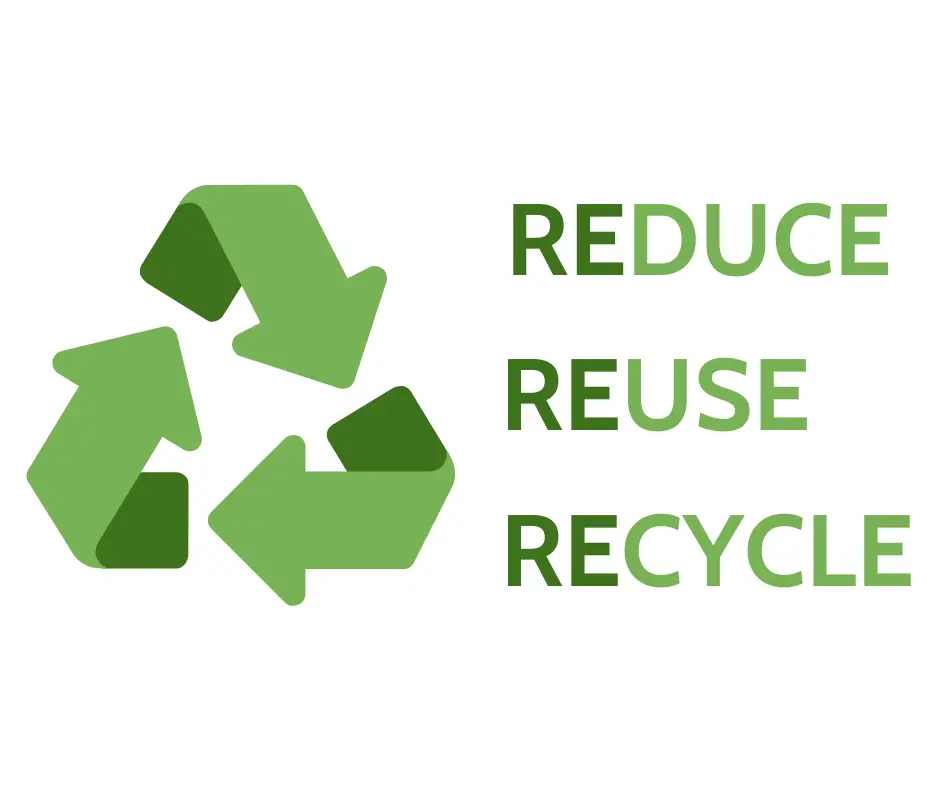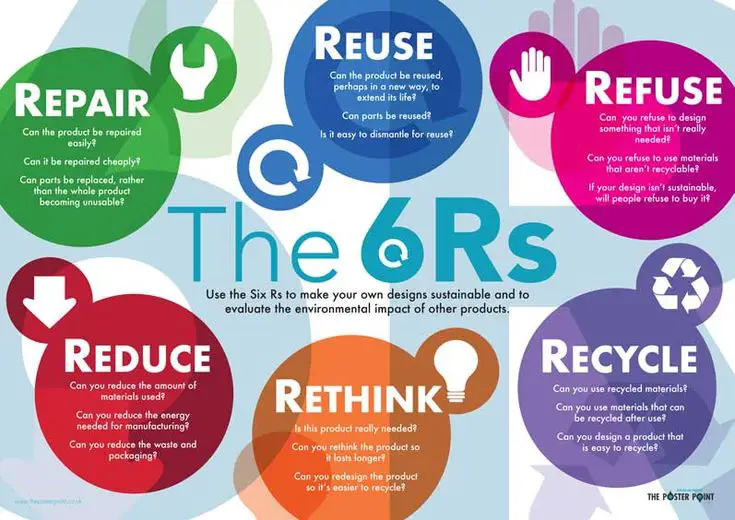Do you ever wonder what you can do to help protect the planet? Well, reducing waste is a great place to start! When we reduce, reuse, and recycle, we are taking steps towards a more sustainable future. In this article, I will discuss how these practices can be incorporated into our daily lives and why they are so important. So, let’s dive in and explore how we can make a positive impact on the environment!
When it comes to reducing waste, adopting a frugal lifestyle can make a significant difference. Being frugal doesn’t mean living a deprived life; it simply means being conscious of our consumption habits and making thoughtful choices. For instance, rather than buying new items, I strive to repair and repurpose things I already own. This not only reduces the demand for new products but also saves me money in the long run. Additionally, I try to avoid single-use items like plastic water bottles or disposable cutlery. Instead, I carry a reusable water bottle and bring my own utensils when eating out. These small adjustments may seem insignificant on an individual level, but when everyone joins in, the impact can be tremendous!
In the upcoming paragraphs, I will delve deeper into the concepts of reusing and recycling and provide practical tips on how to incorporate them into our lives. So, stay tuned to discover more about reducing waste and contributing to a sustainable future!
Reduce, Reuse, Recycle: Taking Steps Towards a Sustainable Future

Introduction
As an individual, I believe that the choices I make matter. In a world grappling with the consequences of excessive consumption and waste, it is important for each of us to take responsibility and strive towards a more sustainable future. By reducing our consumption and waste, we can alleviate the strain on our natural resources and minimize our impact on the environment. In this article, I will explore the reasons for reducing consumption and waste, as well as the benefits and practices that can help us achieve this goal.
Reasons for Reducing Consumption and Waste
Environmental impact of excessive consumption
Excessive consumption leads to the depletion of natural resources and the emission of greenhouse gases, contributing to climate change and environmental degradation. From the extraction of raw materials to the manufacturing and transportation of goods, the entire lifecycle of a product has profound ecological consequences. By reducing our consumption, we can slow down the rate of resource depletion and minimize our carbon footprint.
Benefits of reducing waste and consumption
In addition to the environmental benefits, reducing waste and consumption also has numerous personal and societal advantages. By adopting a more mindful approach to our purchases, we can save money and live a more frugal lifestyle. Decreasing our dependency on consumerism can lead to a greater sense of satisfaction and contentment, as we learn to appreciate the things we already have rather than constantly seeking more. Moreover, reducing waste can alleviate the strain on landfills and waste management systems, ultimately benefiting our communities.

Practices for Reducing Consumption
Adopting a frugal lifestyle
Living a frugal lifestyle does not mean depriving ourselves of basic needs or desires. Rather, it encourages us to make conscious choices about how we spend our money and resources. By differentiating between wants and needs, we can prioritize purchases that add value to our lives while minimizing unnecessary consumption.
Smart shopping habits
When it comes to shopping, it is important to consider the environmental impact of our choices. By opting for products that are locally produced and ethically sourced, we can support sustainable practices and reduce the carbon emissions associated with long-distance transportation. Additionally, buying high-quality, durable items can minimize the need for frequent replacements, leading to a decrease in waste generation.
Avoiding single-use items
Single-use items, such as plastic straws and disposable water bottles, contribute significantly to the global waste problem. By opting for reusable alternatives, such as metal straws and refillable water bottles, we can reduce our consumption of single-use plastics and make a positive impact on the environment. Additionally, shopping in bulk and using reusable shopping bags can further reduce packaging waste.
Embracing minimalism
Minimalism is a lifestyle philosophy that promotes living with fewer possessions and reducing clutter. By embracing minimalism, we can focus on the things that truly matter and minimize our consumption of unnecessary goods. Owning fewer possessions not only reduces waste but also allows us to prioritize experiences and relationships, leading to a more fulfilling life.
Methods for Reusing Goods
Upcycling and repurposing
Upcycling and repurposing refer to the process of transforming old or discarded items into something new and useful. From DIY projects to creative crafts, there are endless opportunities to breathe new life into old possessions. By upcycling and repurposing, we not only minimize waste but also tap into our creativity and resourcefulness.
Donating to charitable organizations
When we no longer need or want certain items, donating them to charitable organizations can be a great way to give them a second life. Clothing, furniture, and other household items can find new homes where they will be appreciated and used. Through our donations, we can reduce waste and support those in need within our communities.
Sharing and borrowing with others
In a world driven by individual ownership, sharing and borrowing can be powerful alternatives that promote resource efficiency. Platforms and communities dedicated to sharing resources, such as tools, books, and even cars, have gained popularity in recent years. By sharing and borrowing, we reduce the demand for new goods and extend the lifespan of existing ones.
Repairing and maintaining items
In a society that often values convenience and quick replacements, repairing and maintaining items can seem like a daunting task. However, by learning basic repair skills and taking care of our possessions, we can extend their lifespan and reduce waste. Instead of discarding broken items, we can explore repair options or seek the help of professionals, contributing to a circular economy where products are repaired, reused, and recycled.

Importance of Recycling
Resource conservation through recycling
Recycling is a fundamental pillar of sustainable waste management. By recycling materials, we can conserve natural resources and reduce the need for raw material extraction. For example, recycling paper reduces the demand for logging, while recycling aluminum cans saves energy and reduces greenhouse gas emissions compared to producing new ones. Embracing recycling is essential in preserving our planet’s resources for future generations.
Types of materials that can be recycled
Many materials can be recycled, including paper, cardboard, glass, plastic, and metal. Each material has its own recycling process and requirements, therefore separating these materials at the source becomes crucial for efficient recycling. By understanding the types of materials that can be recycled and following proper recycling practices, we can maximize the potential for resource recovery.
Recycling process and its benefits
The recycling process involves collecting, sorting, cleaning, and processing materials to create new products. Recycling not only reduces the demand for raw materials but also saves energy and reduces pollution associated with raw material extraction and manufacturing. By choosing products made from recycled materials, we can close the recycling loop and support the circular economy.
Proper Waste Management
Segregating waste for recycling
To ensure effective recycling, it is important to segregate waste at the source. By separating recyclable materials from general waste, we facilitate the recycling process and minimize contamination. Educating ourselves and our communities about proper waste segregation practices is essential in maximizing the potential for recycling.
Composting organic waste
Composting is a natural process of decomposition that transforms organic waste into nutrient-rich soil. By composting food scraps and other organic materials, we can divert this waste from landfills and create a valuable resource for gardening and agriculture. Composting not only reduces greenhouse gas emissions but also promotes sustainable farming practices.
Disposal of hazardous materials
Proper disposal of hazardous materials, such as batteries, electronics, and chemicals, is vital in protecting both human health and the environment. These materials can contain toxic substances that, if not managed correctly, can contaminate soil, water, and air. Local recycling centers and hazardous waste facilities often provide services for safe disposal of these materials, ensuring they do not pose a threat to the environment.
Efficient waste collection and disposal
Efficient waste collection and disposal systems play a significant role in maintaining cleanliness and minimizing the environmental impact of waste. Proper waste management infrastructure, such as recycling bins, waste sorting facilities, and waste-to-energy plants, is essential for ensuring that waste is treated and disposed of in an environmentally friendly manner. By supporting initiatives that improve waste collection and disposal, we can contribute to sustainable waste management practices.

Creating a Sustainable Future through Education
Teaching sustainable practices in schools
Education is a powerful tool for shaping future generations. By integrating sustainable practices into school curriculums, we can instill eco-consciousness and environmental stewardship in young minds. Teaching concepts such as waste reduction, recycling, and energy conservation can empower students to become agents of change and make sustainable choices in their daily lives.
Promoting environmental awareness
Increasing public awareness about the environmental impacts of excessive consumption and waste is vital in promoting change on a larger scale. Through education campaigns, public forums, and media platforms, we can raise awareness about the importance of reducing consumption, reusing goods, and recycling. By highlighting the interconnectedness of our actions and the environment, we can inspire individuals and communities to take action.
Encouraging community involvement
Change begins at the grassroots level, within our communities. By encouraging community involvement in sustainable initiatives, we can create a network of support, collaboration, and shared resources. Community-driven projects, such as neighborhood clean-ups, recycling drives, and sustainable events, can strengthen social connections and empower individuals to take ownership of their environmental impact.
Government and Corporate Initiatives
Legislation and regulations promoting sustainability
Governments play a crucial role in driving sustainable practices through legislation and regulations. Laws promoting waste reduction, recycling, and sustainable resource management can incentivize individuals and businesses to adopt more sustainable behaviors. By holding industries accountable and providing incentives for eco-friendly practices, governments can accelerate the transition towards a sustainable future.
Corporate responsibility and eco-friendly practices
Companies also hold significant influence in shaping sustainable practices. Many businesses are now adopting corporate responsibility initiatives, focusing on reducing their environmental footprint and promoting sustainable business practices. By implementing strategies such as waste reduction, energy efficiency, and responsible sourcing, corporations can make a positive impact on the environment while also improving their bottom line.

Innovation in Sustainable Technology
Renewable energy options
Advancements in renewable energy technologies have the potential to revolutionize our energy systems and reduce our dependence on fossil fuels. Solar, wind, hydroelectric, and geothermal energy sources offer clean, renewable alternatives to traditional energy sources. By investing in renewable energy infrastructure and adopting renewable energy technologies, we can move towards a more sustainable and carbon-neutral future.
Advancements in eco-friendly products
Innovations in eco-friendly products are creating alternatives to conventional, resource-intensive materials and manufacturing processes. From biodegradable packaging materials to plant-based fabrics, these advancements are addressing the environmental impacts of various industries. By choosing products made from sustainable materials, we can support the growth of eco-friendly industries and reduce our environmental footprint.
Smart technology for energy efficiency
The rise of smart technology presents opportunities for significant energy savings and greater efficiency. Smart thermostats, energy monitoring systems, and automated lighting systems allow individuals and businesses to optimize energy consumption and reduce waste. By embracing smart technology, we can make our homes, workplaces, and cities more energy-efficient, contributing to a greener future.
Building Sustainable Communities
Promoting local businesses and agriculture
Supporting local businesses and agriculture offers numerous benefits for communities and the environment. Locally produced goods and services require fewer transportation miles, reducing carbon emissions associated with long-distance travel. Additionally, supporting local farmers promotes sustainable agricultural practices and helps preserve farmland. By fostering strong local economies, we can build resilient and sustainable communities.
Improving public transportation
Investing in public transportation infrastructure and promoting its use can significantly reduce both traffic congestion and carbon emissions. By providing accessible and efficient public transportation options, we can incentivize individuals to leave their cars at home, leading to cleaner air, less pollution, and reduced reliance on fossil fuels. Additionally, promoting walking and biking infrastructure can further reduce the need for individual car ownership.
Creating green spaces
Green spaces, such as parks, gardens, and urban forests, provide numerous environmental and social benefits. They improve air quality, mitigate the urban heat island effect, and provide habitats for wildlife. Additionally, green spaces offer opportunities for recreational activities and community gatherings. By investing in and creating green spaces, we can enhance the quality of life in our communities and strengthen our connection with nature.
Challenges in Achieving a Sustainable Future
Overcoming consumerism and societal norms
Consumerism and societal norms that prioritize material possessions can be major barriers to achieving sustainability. The constant pressure to consume and the belief that more is better often leads to excessive consumption and waste. Overcoming these challenges requires a shift in mindset and a reevaluation of our values. By questioning societal norms and embracing alternative lifestyles, we can challenge consumerism and foster more sustainable behaviors.
Balancing economic growth with environmental protection
Striking a balance between economic growth and environmental protection is an ongoing challenge for governments, businesses, and individuals. While economic growth is essential for improving quality of life and addressing social issues, it often comes at the expense of the environment. Finding ways to decouple economic growth from resource consumption and environmental degradation is crucial for achieving a sustainable future.
Resistance to change
Resistance to change is another challenge that often hinders progress towards sustainability. Breaking free from established habits and adopting new behaviors can be difficult, both individually and collectively. However, by emphasizing the benefits of sustainable practices and providing support and resources for change, we can overcome resistance and create a culture that embraces sustainability.
The Role of Individuals in Creating Change
Empowering individuals to make a difference
As individuals, we have the power to make a difference in creating a sustainable future. By making conscious choices about our consumption, waste management, and energy use, we can reduce our environmental impact and inspire others to do the same. Every small action counts, and by leading by example, we can collectively bring about positive change.
Volunteerism and activism for sustainability
Getting involved in volunteer activities and environmental activism is another way to contribute to sustainability. By joining local environmental groups or participating in clean-up initiatives, we can actively engage in efforts to protect and conserve the environment. Additionally, advocating for sustainable policies and practices, both locally and globally, can bring about systemic change.
Leading by example
One of the most powerful ways to inspire change is by leading by example. By adopting sustainable practices in our daily lives, we demonstrate the feasibility and benefits of a more sustainable lifestyle to those around us. Whether it is reducing waste, recycling, or choosing environmentally friendly products, our actions can inspire others and create a ripple effect towards a sustainable future.
Collaboration for a Greener World
Partnerships between individuals, organizations, and governments
Collaboration between individuals, organizations, and governments is critical in addressing the complex challenges of sustainability. By working together, we can combine resources, knowledge, and expertise to develop innovative solutions and drive meaningful change. Partnerships can foster collective action and create a platform for sharing best practices and promoting sustainable initiatives.
Sharing knowledge and resources
Sharing knowledge and resources is key to empowering individuals and communities to adopt sustainable practices. By freely exchanging information, ideas, and experiences, we can collectively learn and grow. Platforms for knowledge-sharing, such as social media, blogs, and community workshops, can facilitate this process and nurture a culture of sustainable living.
Global efforts for sustainability
Sustainability is a global challenge that requires global solutions. International collaborations and agreements, such as the United Nations’ Sustainable Development Goals, provide a framework for global action towards sustainability. By supporting global efforts, such as the Paris Agreement on climate change, we can work towards a more equitable and sustainable future for all.
Measuring Success in Sustainability
Key indicators for measuring environmental impact
Measuring environmental impact is crucial in assessing progress towards sustainability. Key indicators, such as greenhouse gas emissions, water consumption, waste generation, and biodiversity loss, provide valuable insights into our ecological footprint. By monitoring these indicators, we can understand the effectiveness of our sustainability efforts and identify areas for improvement.
Monitoring progress and setting goals
Monitoring progress and setting goals are essential for maintaining momentum and ensuring continuous improvement. By regularly assessing our sustainability practices and setting measurable targets, we can track our progress and stay accountable. Whether it is reducing waste, increasing recycling rates, or improving energy efficiency, setting specific goals allows us to gauge the effectiveness of our actions.
Recognizing sustainable achievements
Recognizing sustainable achievements, both individually and collectively, celebrates progress and inspires further action. Acknowledging sustainable initiatives and success stories can motivate others to follow suit and create a positive feedback loop. From sustainability awards to public recognition, highlighting and celebrating sustainable achievements encourages ongoing efforts towards a greener future.
Conclusion
In conclusion, the collective effort towards sustainability is crucial for building a better future for ourselves and the planet. By reducing our consumption and waste, reusing goods, and recycling, we can contribute to the conservation of natural resources, minimize our carbon footprint, and protect the environment. Balancing economic growth with environmental protection, overcoming consumerism, and embracing sustainable practices are some of the challenges that lie ahead. However, by empowering individuals, collaborating on a global scale, and measuring our progress, we can pave the way towards a more sustainable and resilient world. Remember, every small action counts, and each of us has the power to contribute and create positive change. Let us walk hand in hand towards a sustainable future.
